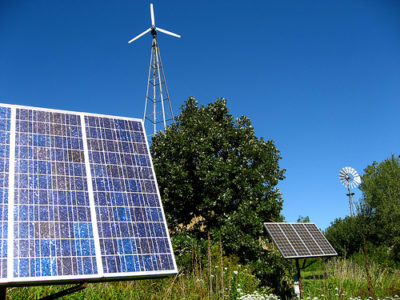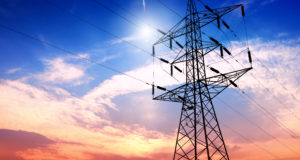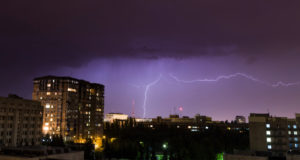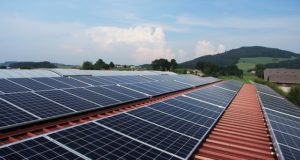 Solar panels are ubiquitous among American homes, and for good reason – solar power is clean, silent, renewable, and prices on solar products have fallen to the point where the average person can easily afford a solar system of some kind.
Solar panels are ubiquitous among American homes, and for good reason – solar power is clean, silent, renewable, and prices on solar products have fallen to the point where the average person can easily afford a solar system of some kind.
On the surface, wind power in the form of turbines seems to check many of the boxes that solar power does – wind power is also relatively silent; it uses a form of energy that, like sunlight, is naturally occurring and is renewable; and it represents a similar cost of initial installation and a lifetime of free power. Or does it?
Sometimes, we are fooled by what we see around us. Mostly, solar panel installations are limited to modestly sized home units. Occasionally, we’ll see a large solar installation – something like the entire roof of a parking structure or office building. Rarely, we will see a solar farm with several acres of solar panels – but only rarely. Wind turbines, on the other hand, are rarely seen on individual homes and most commonly found on multiple thousand acre wind farms or even out to sea. These massive towers, many of which stretch to a hundred feet in height or more, can generate power that is measured in megawatts. So that must mean that wind power is far more effective than solar – right? Not really – it’s all a matter of scale.
First of all, when looking at alternative energy sources for your home, you need to consider the environment, and this goes for both solar and wind power. Solar applications in which the home sits on a heavily shaded lot covered in trees in an area of the country that sees very little average daily sunlight will be unsuccessful, just as a small wind turbine installation in an area that sees very little wind will fail. Both systems need adequate if not ideal circumstances to thrive.
Harness the power of the sun when the power goes out…
On its face, it would seem that wind is just as abundant as sunlight – after all, the air is always moving just as the sun is always shining. In reality, though, small scale wind turbines rarely meet buyer expectations. This is because:
1. The wind required must be above average. Gentle breezes and mild zephyrs do nothing to reliably power wind turbines. In order to power a wind turbine with any sort of efficiency, you need to live in an area that sees sustained, constant and reliable winds on a daily basis. There are such parts of the country that see this sort of wind, and they are mainly located on the coasts as well as areas in which wind is naturally funneled such as mountain passes.
2. The wind must be turbulence-free or very close to it. Turbulence is the bane of the wind generator. Winds that are unpredictable, vary in intensity, and come from all sorts of angles – basically, turbulent winds – don’t power wind turbines very efficiently. Turbulence is in part generated by the terrain, whether it is naturally occurring or manmade. Your house’s roof generates turbulence as wind passes over it. Buildings in the path of your home can also cause turbulence. Generally, a good way to minimize turbulence is to position the wind turbine up high, away from the turbulent wind. Unfortunately, this means a tall installation – in many cases measure in tens of feet to clear the turbulent layer of air that exists above your home’s roof.
Essentially, it all boils down to efficiency, plain and simple. A 1 kW wind turbine mounted five or eight feet above your roof in a reliably windy area can be expected to at best give a mediocre result and not provide the steady, reliable – and free – power you are seeking. On the other hand, a series of 80-100 foot wind turbine towers located on a wind farm can provide loads of energy, but these are outside the scope of your average person to purchase. Lastly, consider that wind turbines have moving parts. This means wear and tear, and they will not run forever without some form of eventual maintenance. They are also far from silent in some conditions.
Solar power, by contrast, is much more suited to the scale of operations that your average household will encounter. Solar power is absolutely silent as well, and with no moving parts, there is minimal wear and tear, even over a time period measured in decades. Additionally, most solar power installations can fit entirely within the footprint of the average home and fulfill most if not all of that home’s power needs, which cannot be said for wind turbines. On the other hand, when massive amounts of power are needed along the scale of megawatts or even gigawatts, then ridiculously sized wind farms are the answer. All in all, wind and solar power are not really opposing forms of power generation – they are complementary and both have their place. For most people, though, solar power will consistently make more sense.
Sign up for Off The Grid News’ weekly email and stay informed about the issues important to you
 Off The Grid News Better Ideas For Off The Grid Living
Off The Grid News Better Ideas For Off The Grid Living




